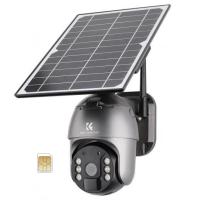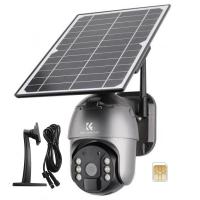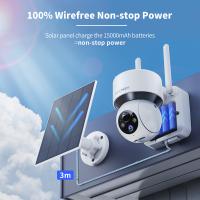Can You Remove Solar Panels?
Solar panels have become a popular choice for homeowners and businesses looking to reduce their carbon footprint and save on energy costs. However, there may come a time when you need to remove your solar panels. Whether it's due to roof repairs, system upgrades, or moving to a new location, understanding the process and considerations involved in removing solar panels is crucial. In this article, we will explore the reasons for removing solar panels, the steps involved, potential costs, and important considerations to ensure a smooth and safe removal process.

Reasons for Removing Solar Panels
1. Roof Repairs or Replacement: One of the most common reasons for removing solar panels is to perform roof repairs or replacement. Solar panels are typically installed on the roof, and any significant roofing work may require their temporary removal to access the underlying structure.
2. System Upgrades: As solar technology advances, you may want to upgrade your existing solar panel system to more efficient or higher-capacity panels. This often involves removing the old panels and installing new ones.
3. Relocation: If you are moving to a new home or business location, you may want to take your solar panels with you. This requires careful removal, transportation, and reinstallation at the new site.
4. End of Lease or Purchase Agreement: For those who have leased their solar panels or entered into a power purchase agreement (PPA), the end of the contract may necessitate the removal of the panels if you choose not to renew the agreement.
5. Damage or Malfunction: In some cases, solar panels may become damaged or malfunction, requiring their removal for repair or replacement.
Steps Involved in Removing Solar Panels
Removing solar panels is a complex process that should be handled by professionals to ensure safety and prevent damage to the panels or the roof. Here are the general steps involved:
1. Assessment and Planning: Before any removal work begins, a thorough assessment of the solar panel system and the roof is conducted. This includes evaluating the condition of the panels, the mounting hardware, and the electrical connections. A detailed plan is then created to outline the removal process.
2. Disconnecting the System: The first step in the physical removal process is to disconnect the solar panel system from the electrical grid. This involves shutting off the power supply and safely disconnecting the wiring and inverters.
3. Removing the Panels: Once the system is disconnected, the solar panels can be carefully removed from the mounting brackets. This step requires precision to avoid damaging the panels or the roof. The panels are then safely lowered to the ground.
4. Dismantling the Mounting Hardware: After the panels are removed, the mounting hardware, including brackets and rails, is dismantled. This step may also involve removing any sealant or adhesive used to secure the hardware to the roof.
5. Inspecting and Repairing the Roof: With the panels and hardware removed, the roof is inspected for any damage or wear. Necessary repairs or maintenance work is then carried out to ensure the roof is in good condition.
6. Transporting and Storing the Panels: If the panels are to be reinstalled at a new location or stored for future use, they are carefully packed and transported to prevent damage during transit.
Potential Costs of Removing Solar Panels
The cost of removing solar panels can vary widely depending on several factors, including the size of the system, the complexity of the installation, and the reason for removal. Here are some potential cost considerations:
1. Labor Costs: Professional labor is required for the safe removal of solar panels. Labor costs can vary based on the complexity of the job and the rates charged by the removal company.
2. Equipment and Materials: Specialized equipment and materials may be needed for the removal process, including safety gear, tools, and transportation equipment.
3. Roof Repairs: If roof repairs or maintenance are required, this can add to the overall cost. The extent of the repairs will depend on the condition of the roof and any damage caused by the removal process.
4. Disposal or Recycling: If the panels are damaged or no longer needed, there may be costs associated with their disposal or recycling. Some companies offer recycling services for old or damaged solar panels.
5. Reinstallation Costs: If the panels are to be reinstalled at a new location, additional costs will be incurred for the reinstallation process, including any necessary permits and inspections.
Important Considerations
When planning to remove solar panels, there are several important considerations to keep in mind:
1. Professional Expertise: Removing solar panels is not a DIY project. It requires specialized knowledge and expertise to ensure the process is carried out safely and efficiently. Always hire a professional solar panel removal company with experience in handling such projects.
2. Permits and Regulations: Depending on your location, permits and regulations may apply to the removal and reinstallation of solar panels. Check with your local authorities to ensure compliance with all relevant requirements.
3. Warranty and Insurance: If your solar panels are still under warranty, check the terms and conditions to understand how removal may affect the warranty coverage. Additionally, review your insurance policy to ensure coverage for any potential damage during the removal process.
4. Environmental Impact: Consider the environmental impact of removing and disposing of solar panels. Whenever possible, opt for recycling or repurposing old panels to minimize waste and reduce environmental harm.
5. Future Plans: Think about your future plans for the solar panel system. If you intend to reinstall the panels at a new location, ensure that the new site is suitable for solar installation and that all necessary preparations are made in advance.
Removing solar panels is a complex and multifaceted process that requires careful planning and professional expertise. Whether you need to remove your panels for roof repairs, system upgrades, relocation, or other reasons, understanding the steps involved and the potential costs can help you make informed decisions. By considering important factors such as permits, warranties, and environmental impact, you can ensure a smooth and successful removal process. Always work with experienced professionals to ensure the safety and integrity of your solar panel system and your property.








































